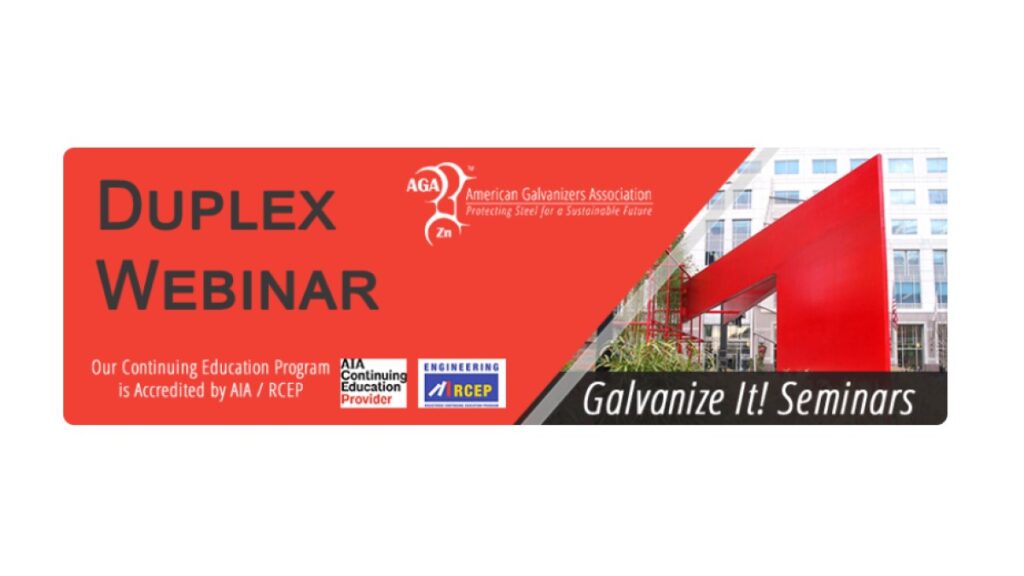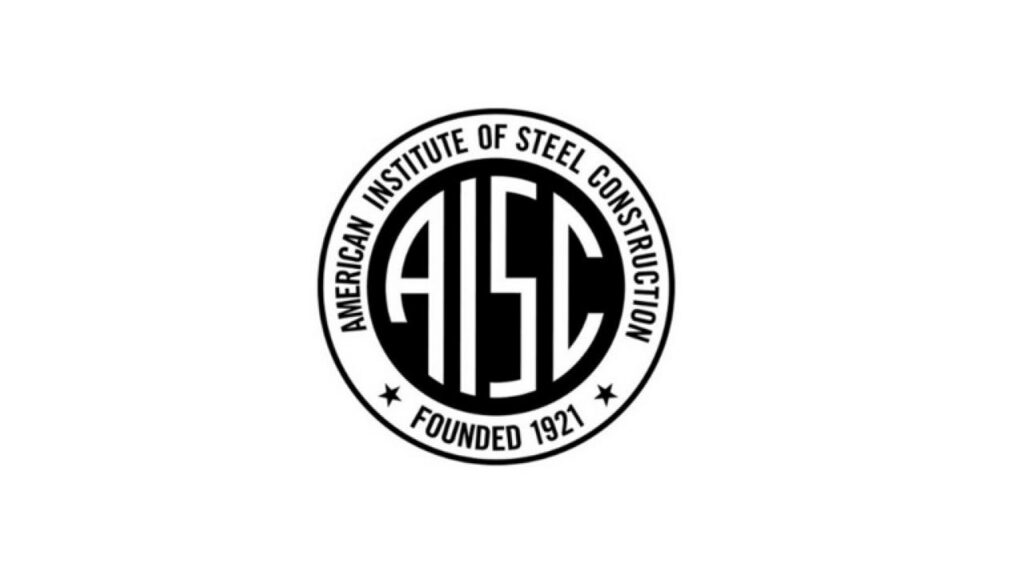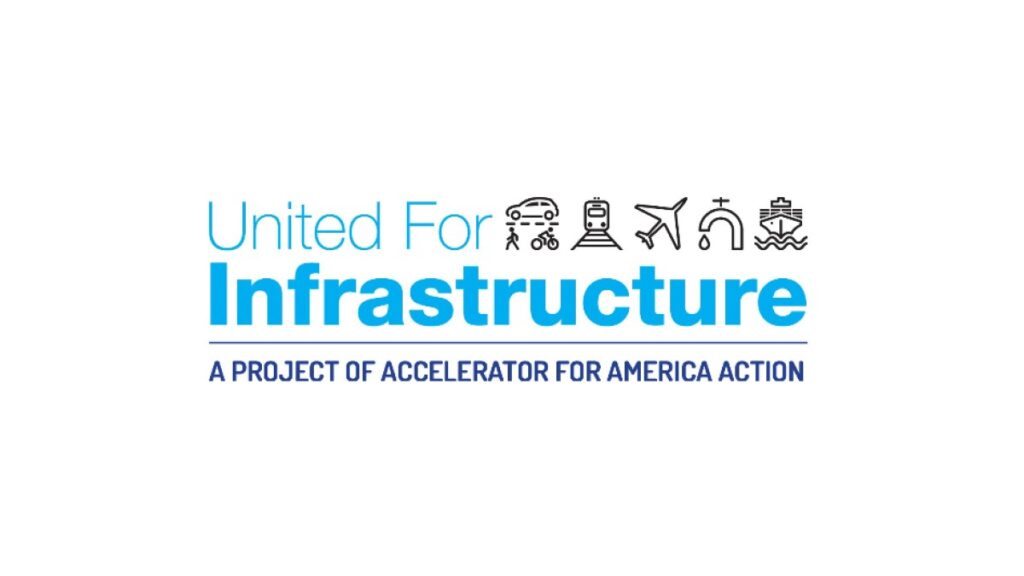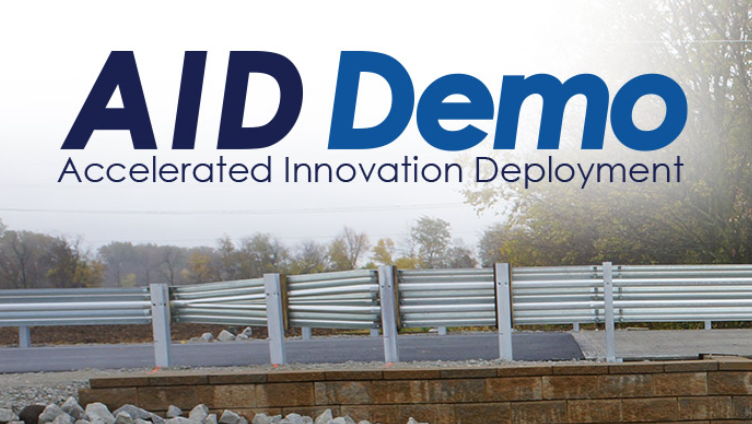What You Should Know About Buried Bridges
In the video (above), Joel Hahm (Contech Engineered Solutions LLC) and Michael McGough (National Corrugated Steel Pipe Association) provide a lecture on the “Capabilities and Advantages of Steel Buried Bridges”. This video is part of a 7-part webinar series on solutions for cost-effective steel bridges.
Expert Q&A
An Interview With Joel Hahm
Joel Hahm is Senior Engineer and Buried Bridge Specialist with Contech Engineered Solutions LLC. He is responsible for design, estimation, feasibility assessment, and development of buried bridge projects nationwide.
Q: How is a buried bridge system different from an above-ground bridge?
A: Buried bridges carry loads through soil-structure interaction. This means the bridge structure itself and the backfill soils surrounding the structure interact with each other to support the loads. In effect, the backfill material is part of the bridge. Because of this interaction, the bridge structure is typically lighter, and there can be significant savings in structure costs.
There are also many cases where buried bridges can carry heavier loads than traditional bridges because of the benefits of spreading vehicle loads through the fill. Buried bridges do not require abutments; and unless foundation soil conditions are poor, do not typically require deep foundations. Because of this, little differential movement or settlement between the buried bridge and adjacent embankments can be expected. This construction procedure can effectively eliminate the “bump at the end of the bridge” that you get with traditional bridges.
As a result, maintenance is essentially the same as it would be for any other section of the road, while a traditional bridge requires maintenance of the bridge deck, bearings, approaches, joints, and other elements.An additional benefit with buried bridges is that they can be tailored to site conditions and geometric requirements. The design includes inputs for site soils and backfill, meaning that locally available materials can often be used in construction and the structure can be tailored to fit the needs of the site and the owner’s requirements.
Q: Are buried bridges just culverts?
A: No. Many engineers view buried bridge structures as culverts, and they can perform similar functions in some applications. The biggest difference is that buried bridge structures usually do not have an invert―they are typically bottomless.
Also, buried bridges consist of much larger corrugation profiles than culverts, and are designed and built for much larger spans. As a result, they tend to be much stiffer and carry the loads differently. A buried bridge system can be on the order of 17 to 150 times stiffer and have much higher yield strength than culvert pipe depending on the corrugation profile.Buried bridges also have a higher service life than culverts.
American Iron and Steel Institute (AISI) service life charts and design life charts used by many state Departments of Transportation (DOTs) show that the predicted service life of buried bridges can often be two to three times longer than culverts. This is largely due to the service life of culverts being determined based on the performance of an invert. Since there is no invert in a buried bridge, service life will primarily be a function of proper construction and backfill materials, maintenance, and how the structure is used―factors that can be controlled by the owner.Another key difference between culverts and buried bridges is that the galvanized coating on buried bridges is 50 percent greater than the galvanized coating on culverts, and the steel thickness is often much higher. As a result, there is more galvanizing protection to start with, and much more steel left if the galvanizing is removed.
Q: How much does galvanizing influence performance?
A: Many engineers believe that service life and durability are a function of the galvanized steel material. While it is important for the material to be of the correct thickness and the galvanized coating to be properly applied, service life and durability depend more on proper installation with the appropriate backfill materials and regular maintenance. Just as with any other type of bridge, if the structure is not properly installed and maintained, it will not last as long as intended.
Q: Are soil properties a factor?
A: Yes, particularly when evaluating overall project cost. Buried bridges are dependent on strong backfill materials. In some parts of the country, these materials are readily available and cost less. In other areas, that’s not the case. The good news is that because of the way buried bridges are designed, less than ideal backfill materials can often be considered. This can result in significant cost savings and often allow for use of on-site materials for backfill.Another consideration is that electrochemical properties of soils and water in contact with the structure can impact service life.
Typically, granular backfill material will almost always have pH and resistivity values in the appropriate range. Some engineers think that if the soils at their project site have pH and/or resistivity values outside of the recommended limits, galvanized steel will be unsuitable, but that’s not the case. Since a select granular material will be in contact with the structure, the site soils should not have major impact on service life. If contact with soils outside of the recommended pH and resistivity range is unavoidable, secondary coatings can be applied or other measures taken as a precaution.
Buried bridge systems can also be designed to accommodate differential settlement. Sometimes with a little bit of soil improvement and/or taking into account settlement tolerances of the flexible structure, deep foundations can be eliminated, which is probably the biggest advantage of flexible steel structures over concrete structures.
Q: Are there topographical considerations?
A: The more distance there is between a stream bed (or bottom of the structure) and the road grade above, the more cost-effective the structure can be. For instance, for a 10-foot-wide stream with sloped embankments passing 20 feet below the proposed road elevation, a traditional bridge may need a 120-foot-span solution. However, a 40-foot-span buried structure may suffice in the same situation, providing significant savings.
There may be some hydraulic benefits as well. Bridges tend to be located at the narrowest part of a stream in order to minimize the span. A buried structure can actually increase the flow area for the water by widening the stream at the normal flow elevation.Many government agencies are requiring the replacement of old culverts with much larger span buried bridges because of environmental requirements that limit disturbance to the surrounding area and mandate restoration of natural stream beds to facilitate passage of aquatic organisms.
Q: What are the advantages of steel vs. other materials in a buried bridge system?
A: Foundation cost is a major factor. Soil-bearing capacity and settlement are the two primary drivers that decide the size and type of foundation for any structure. Steel structures are flexible, having a settlement tolerance of about five to six inches over 50 feet. As a result, they’re able to accommodate higher differential settlement than rigid structures like precast concrete and most traditional bridges. A precast concrete structure is typically designed for one inch or less of total settlement.
Often, a buried bridge foundation design that accounts for two to three inches of settlement will allow for something on the order of double the bearing capacity, or sometimes more. As a result, spread footings can be smaller, and what started out as a deep foundation for a rigid structure can turn into traditional spread footings for a flexible steel structure. This will usually result in significant cost savings on the project.There are also sustainability benefits.
Steel is the most recycled material on the planet, more than all other materials combined. Concrete bridges cannot be recycled into more concrete bridges, but steel bridges can be continually recycled into other steel bridges. Also, more energy is required to produce cement and other components that make up concrete bridges.Much less energy and pollution are involved in the shipping process for steel structures vs. concrete. When comparing the weight of a precast structure with a steel structure of the same span and rise dimensions, the concrete structure will be much heavier.
In many cases, the steel structure can be shipped on a single truck, while many trucks may be required to ship the same-sized concrete structure. Steel provides the more sustainable, “green” solution.Buried steel structures provide a tremendous amount of control over the entire process. They can be built in remote locations because the whole structure can be loaded onto one flatbed truck. They can be taken apart piece by piece and placed in the back of a pickup truck to bring to a remote site if needed.
The plates stack easily on the truck. At the site, individual plates can be handled with skid steer loaders, forklift trucks, backhoes, and other light equipment―no heavy lifting equipment is required for assembly.Note: Read more about the recyclable benefits of steel from the American Iron and Steel Institute.
Q: What about cost?
A: When comparing structure options, it is important to look at the total project cost—not just the structure-only cost. Many engineers ask for a preliminary design and a budget cost for a buried bridge structure and compare that to the cost of a different bridge system. That’s a mistake. They need to look at everything involved with constructing that project, not just the cost of the structure by itself.
When site costs and foundation costs are factored into the total cost equation, the steel option can be significantly less expensive than a precast structure, sometimes on the order of 40 percent to 50 percent. An example is the 56 ft.-5 in. span that Big R Bridge designed and installed as part of the new North Carolina State Veterans Home in Black Mountain, North Carolina. This structure’s initial cost was 40 percent lower than a similar rigid bridge due to the elimination of expensive H-pile deep foundations.
Steel also provides labor cost savings because cities and counties can build buried bridges with their own crews and their own equipment―they don’t have to hire and then wait for a contractor, or wait for a crane to show up on site. The steel structure can be temporarily stored in the yard and built when the schedule permits. Many steel buried bridges can be built in two days or less.
Q: Can buried structures be installed using Accelerated Bridge Construction (ABC) techniques?
A: Yes. Lead times on the design and material acquisition for a buried bridge are usually much faster than a traditional bridge. Typically, on a structure like the 200th Street Bridge in Jesup, Iowa, the structure is pretty much designed by the time the project is awarded. Once it is awarded, the approval drawings can be prepared very quickly; typically no more than a couple of weeks and sometimes less, depending on the project. Once the design is approved, the lead time on materials for buried bridges is generally quite a bit faster than for a traditional bridge.
After receiving approval, the structure could be delivered anywhere from three to eight weeks, depending on the project and structure type. Generally, it takes just weeks (versus months) to go from a signed contract to having a product on site. Construction is typically faster, too. An experienced crew can typically build a bridge like the 200th Street Bridge in two days or less and immediately start backfilling. Other types of structures often require one crew to build the bridge, another crew to build the abutments, and yet another crew for paving. Buried bridge structure construction is a seamless, continuous process.
Q: Have you seen an upswing in the use of buried bridge systems?
A: Yes. Structures like the one used on the 200th Street Bridge project were introduced in the late 1980s. Since that time, there has been a lot of testing and research conducted to understand behavior and refine structural design and performance expectations, which has resulted in more efficient structural designs.
In the past 10 years, there has been a significant jump in terms of structure capabilities and spans. Much of the progress and advancements in applications and uses of buried bridges have been pioneered in the mining, rail, forestry, and local government sectors. Now, DOTs are starting to take notice and consider buried bridge systems as an alternative to traditional bridges.
There is particular interest from the energy industry because these systems are easy to build, have low costs, are easy to transport to remote areas, and can carry heavy loads such as trains, off-road haul trucks, big drill rigs, and trailers with overweight equipment.
Q: Do you think there will be great demand for these systems in the future?
A: Yes. DOTs and counties are taking notice. Buried bridge systems have been around for a long time in multiple industries. AASHTO (American Association of State Highway and Transportation Officials) added deep corrugated profiles to its design specifications in 2009. I think DOTs will take advantage of these systems for their accelerated construction, sustainability, maintenance, low-volume road, resilience, and cost benefits.
Q: In what instances should county engineers and others consider using a buried bridge structure? And, is there a “sweet spot” in terms of length for a buried bridge?
A: Buried bridges should be considered with any other bridge options such as modular, beam, or truss bridges. Almost every small- to medium-span bridge application will likely allow for a buried bridge option. The crossing requirements, site conditions or cost might make one a better choice than another, but buried bridges can meet many of these needs.
For projects that require structures to carry heavy loads, buried bridges are often a better option than traditional bridges. For example, buried bridges have been designed to carry mining shovels weighing about four million or more pounds, big haul trucks weighing over one million pounds, and freight train loads.
It is difficult to design a traditional bridge to carry those loads. Buried structures can do it because the backfill that is integral to their design actually helps to distribute the live load from heavy vehicles. Similar value can be found in buried bridges required to carry oil rigs and heavy farm equipment across streams. In rural areas, there is the added benefit of not having to require pavement over a buried bridge, which saves maintenance costs because there is not a bridge deck or paved section of a gravel road to maintain.While it depends on the application and the conditions, the biggest “bang for your buck” for a buried bridge system is in the 25-foot to 80-foot-span range.
Q: Where can county engineers and other bridge design and construction professionals get more information on this topic?
A: The best resources are the manufacturer, the National Corrugated Steel Pipe Association (NCSPA), and the Short Span Steel Bridge Alliance (SSSBA). There have been a number of papers written on various topics related to buried bridge structures through the Transportation Research Board (TRB). The AASHTOLRFD Bridge Design Specification, Section 12 and the AASHTO LRFD Bridge Construction Specification, Section 26 include design and construction specifications. Another good resource on the performance of steel structures is the American Galvanizers Association (AGA).
For More Information:
Joel Hahm, PE
Contech Engineered Solutions LLC
970.347.2208
Senior Engineer
jhahm@conteches.com
-
Free Webinar, Galvanize It! Duplex Webinar (Apr. 30)
The American Galvanizers Association invites you to attend a 1-hour free webinar event.
-
AISC Seeks Nominations for Industry, Designer and Educator Awards
The American Institute of Steel Construction (AISC) is now accepting nominations for its 2025 awards that honor outstanding steel industry professionals and designers.
-
Free Workshop: Submitting for Competitive Notice of Funding Opportunities (NOFO) (Apr. 17)
Register for an upcoming U.S. Department of Transportation (USDOT) and United for Infrastructure planning workshop focused on Notice of Funding Opportunities (NOFO) and discretionary grant FAQs.
-
Free Webinar: 2024 Accelerated Innovation Deployment (AID) Demonstration Information Session (March 19)
This free webinar is to provide an overview of the 2024 Accelerated Innovation Deployment (AID) Demonstration solicitation.
-
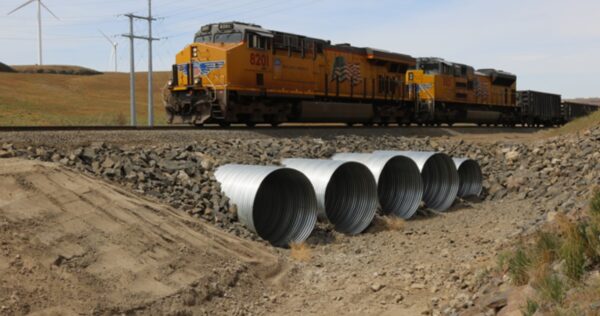 Case Study
Case Study
Corrugated Steel Pipe Safeguards Rail System from Excessive Storm Water
The National Corrugated Steel Pipe Association (NCSPA) spotlights a project that used corrugated steel pipe to provide a storm water solution in only 8 hours.
 News
News
New Resiliency Video Compares Corrugated Steel Pipe to Other Materials
The National Corrugated Steel Pipe Association (NCSPA) launched a new video focused on the resiliency of corrugated steel pipe – commonly used in buried steel bridges.
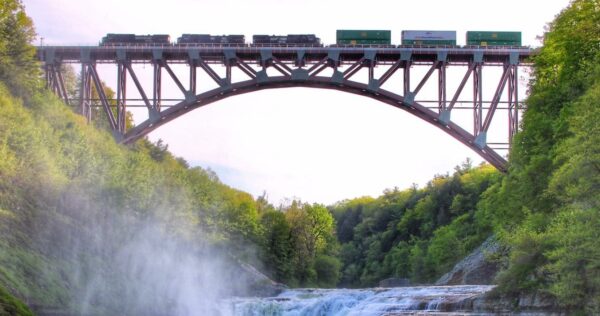 News
News
Funding On Its Way for Rail Bridges
The Biden administration announced $16.4 billion for rail projects along Amtrak’s Northeast Corridor as part of the overall investments in infrastructure.
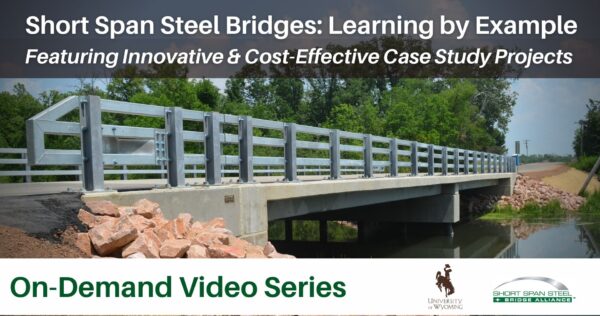 Buried Bridge
Buried Bridge
On-Demand Steel Bridge Video Series: Learning By Example
A distinguished panel of 8 industry experts to present case studies that offer innovative and cost-effective examples of steel bridge replacement projects.
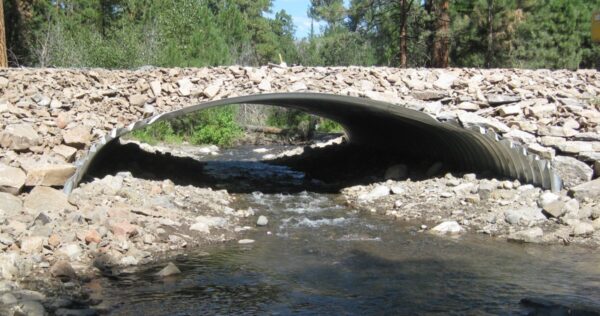 Events
Events
October 31: Webinar – Demonstrated Performance of Buried Bridges
The American Galvanizers Association invites you to attend a 1-hour webinar sustainable development and hot-dip galvanizing.
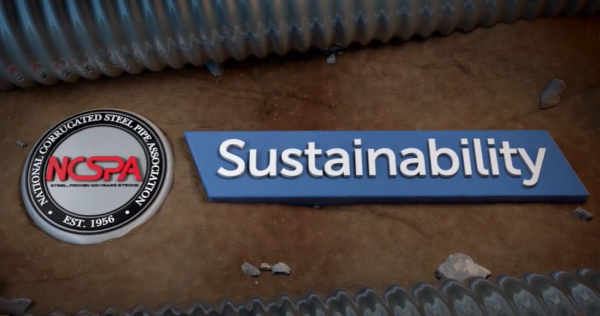 News
News
New Sustainability Video Compares Corrugated Steel Pipe to Other Materials
The National Corrugated Steel Pipe Association (NCSPA) launched a new video focused on the sustainability of corrugated steel pipe – commonly used in buried steel bridges.
 Short Span Steel Bridges
Short Span Steel Bridges 